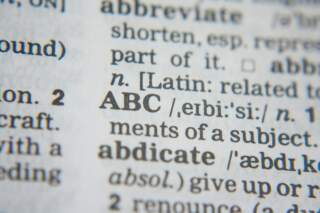
Introduction
In an earlier post, I discussed ways to integrate AI in high school English Language Arts, discussing the importance of prompt engineering and providing some sample suggestions how to use AI for planning or lesson development.
What if, however, teachers want students to use AI like ChatGPT or Gemini so that they, too, can benefits from its use?
There are, of course, ethical considerations to think of when letting students use AI; as it stands, many teachers are concerned that allowing the use of AI may hinder students’ ability to engage academically and critically with content.
After all, why prepare a literary analysis on Jane Eyre when ChatGPT or Gemini can do it in a fraction of time?
Keeping that in mind, there are ways students can use AI in high school English that supplement the instruction they’re receiving. What follows are tips and suggestions that may be useful.
Review Prompt Engineering
Perhaps the most important tip in helping students use AI is teaching them the basics of prompt engineering.
Recall that prompt engineering is the process of creating and refining prompts to help AI models produce the responses you want. The more specific and detailed your prompt is, the more desirable your output may be.
When having students use AI in high school English, they will need to have opportunities to practice prompt engineering to help sharpen their prompting skills.
One way this can be achieved is by having them ask AI questions about a text they’re reading. If, for example, they’re reading “Sonnet 18” by William Shakespeare, have them ask ChatGPT or Gemini questions related to the sonnet such as possible themes or literary elements used.
From there, they can continue engaging in conversation with AI about “Sonnet 18”, asking it more about what that literary device is supposed to mean or why it’s important in the sonnet. In doing this activity, students will be able to understand how the quality of AI’s response relates to the prompt they entered.
It’s also another way of introducing the next tip.
Review Hallucinations
While AI is good at outputting information on the user’s detailed prompt, it doesn’t mean that the information is accurate. Recall that when an AI hallucinates, it makes up information that isn’t real or true.
In using AI in high school English, students encountering AI hallucinations is a great way to have a discussion on authenticity and critical thinking, namely evaluating whether AI’s output is correct.
Going back to our example with “Sonnet 18”, let’s assume that ChatGPT or Gemini’s output included hallucinations. As a whole-group activity and discussion, encourage students to explore their thoughts on why AI’s output is incorrect and what that shows them about the importance of verifying information.
Another activity could include English teachers posting an AI-generated summary of a text that was just read in class and having students determine whether AI’s output is correct. If so, what makes it correct, and what text evidence supports the summary? Conversely, what makes it incorrect, and what text evidence refutes the summary?
Use AI as a Writing Assistant
After students have had enough practice with prompt engineering and hallucinations, the next step of using AI in high school English is allowing students to assist it with their writing. This becomes increasingly useful if teachers have a class size of 20 or more and are limited in the amount of instructional time for 1-on-1 or small group support.
For example, if students are working on an essay and aren’t sure if one of their sentences or paragraphs make sense, have them practice copying/pasting their paragraph into ChatGPT or Gemini and prompting it to evaluate the writing criteria such as:
- organization
- development of ideas
- clarity and coherence
- sentence variety
From there, students can read the output and determine whether it’s a fair assessment and evaluation of their writing. They can also share its response with their teacher so that the teacher can determine if they agree.
Using AI as a writing assistant doesn’t mean that reviewing elements of writing is thrown out the window. What it means is that it gives students an opportunity to receive personalized help when necessary, especially if their teacher isn’t available.
Sentence and paragraph revision and editing aren’t the only benefits of students using AI in high school English. They can also ask AI to rewrite a sentence using literary devices if they’re doing creative writing or help brainstorm possible ideas or arguments on a given topic.
Use AI as a Reading Assistant
Writing isn’t the only use case for students using AI in high school English. AI also makes a good reading assistant, especially for students who struggle with reading comprehension.
Let’s say students are reading a text that’s somewhat challenging, and they come across several unfamiliar words or phrases they’ve never encounter. Similarly, as they’re reading, they come across challenging pieces of information that they’re having a hard time understanding.
With unfamiliar words or phrases, using a dictionary may be helpful, but it might not provide the context students need to understand the idea being expressed. By prompting ChatGPT or Gemini to simplify the meaning of the word or phrase, they’re able to adjust the explanation to their level of understanding.
Similarly, with challenging pieces of information (which might be a whole paragraph) students can prompt ChatGPT or Gemini to break that paragraph down into a bullet list that uses simpler language, ensuring they are able to understand the ideas being expressed.
Conclusion
The possibilities of students using AI are limitless; these tips and suggestions provide a good starting point for helping students use AI in a meaningful way that supports their learning.
What tips or suggestions do you have for using AI in high school English? Let me know in the comments!






Leave a Comment